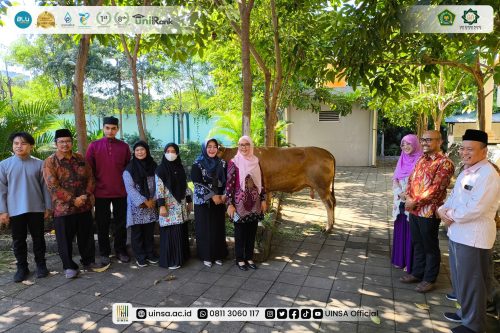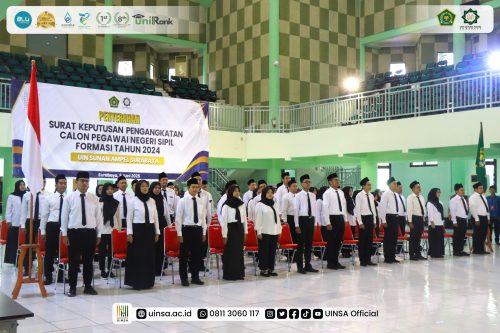
The Falak Science Study Program (IF) held an “Ngaji hilal” event which is routinely held every month this month (August 2023) feels different. The difference in this ngaji hilal is that the study is usually carried out at the beginning of the month after the occurrence of ijtima’ or conjunction. This month it was held long after the occurrence of ijtima’ or conjunction. The conjunction in this month occurred on August 16, 2023, while the new study was held on August 22, 2023. The study, which is held regularly on line, on August 22, 2023 at 19.00 – 21.00 WIB, takes the theme of Isyraq Time in Fiqh Science. The resource person for the study was Ahmad Mufti Khazin, M.HI. lecturer in the faculty of sharia and law, Sunan Ampel Surabaya State Islamic University.
Lecturer Ahmad Mufti Khazin, in his presentation of material, begins with an explanation of the word isyrâq. The word isyrâq linguistically means rising, as it is said: ‘ashraqas shamsu’ which means the Sun has risen. Followed by an explanation related to the difference between Syuruq and Isyraq. Shuruq means the rising of the Sun which has not risen to the size of a spear. It is the opposite of sunset. Whereas Isyraq means the rising of the Sun by rising to the size of a spear shaft.
Deep Discussion
Furthermore, the speaker elaborated on the meaning or terms Isyraq and Dluha. According to some scholars, the time of Isyraq lasts from the time the Sun is as high as a spear until the camel that lies in the sand begins to stand up because it has begun to heat up (dluha). Mathematically, the speaker described the division of time after Fajr. In his presentation, he explained that the division of time after dawn until zuhr is divided into several terms. The first is Syuruq, which occurs between 5:33 am – 5:57 am. Second, it is called Isyraq, which is between 05:57 – 08:30 WIB. Third, it is called Dluha time between 08.30 – 11.34 WIB.
Kiai Mufti Khazin further elaborated on the difference between the time of Shuruq and Isyraq if calculated in the time range, the difference between Shuruq and Isyraq is 20 to 25 minutes. While the dawn time starts 10 minutes before the middle of the time between the end of dawn and the beginning of zuhr time (around 9 o’clock) and ends after entering zuhr (zawal shamsi).
Based on the Narsumber’s explanation, the study participants captured the confusion of understanding the time of isyraq with dluha. In response to this, the speaker explained the terms Isyraq and Dluha prayer. He explained that some people think that prayer Isyraq is Prayer Dluha. However, if the voluntary prayer is performed at the beginning of time, when the Sun rises and has risen to the size of a spear (according to the naked eye), it is called the Isyraq prayer. If it is performed at the end of the time or in the middle of the time until the end, it is called the Dluha prayer. There is also the opinion of most scholars who assert that the Isyraq prayer is the dlahwah shughra prayer and the Dluha prayer is the dlahwah kubra prayer. According to Imam al-Ghazali, Imam as-Suyuthi, and Shaykh Alil Muttaqi al-Hindi, the Isyraq prayer is not the Dluha prayer.
















